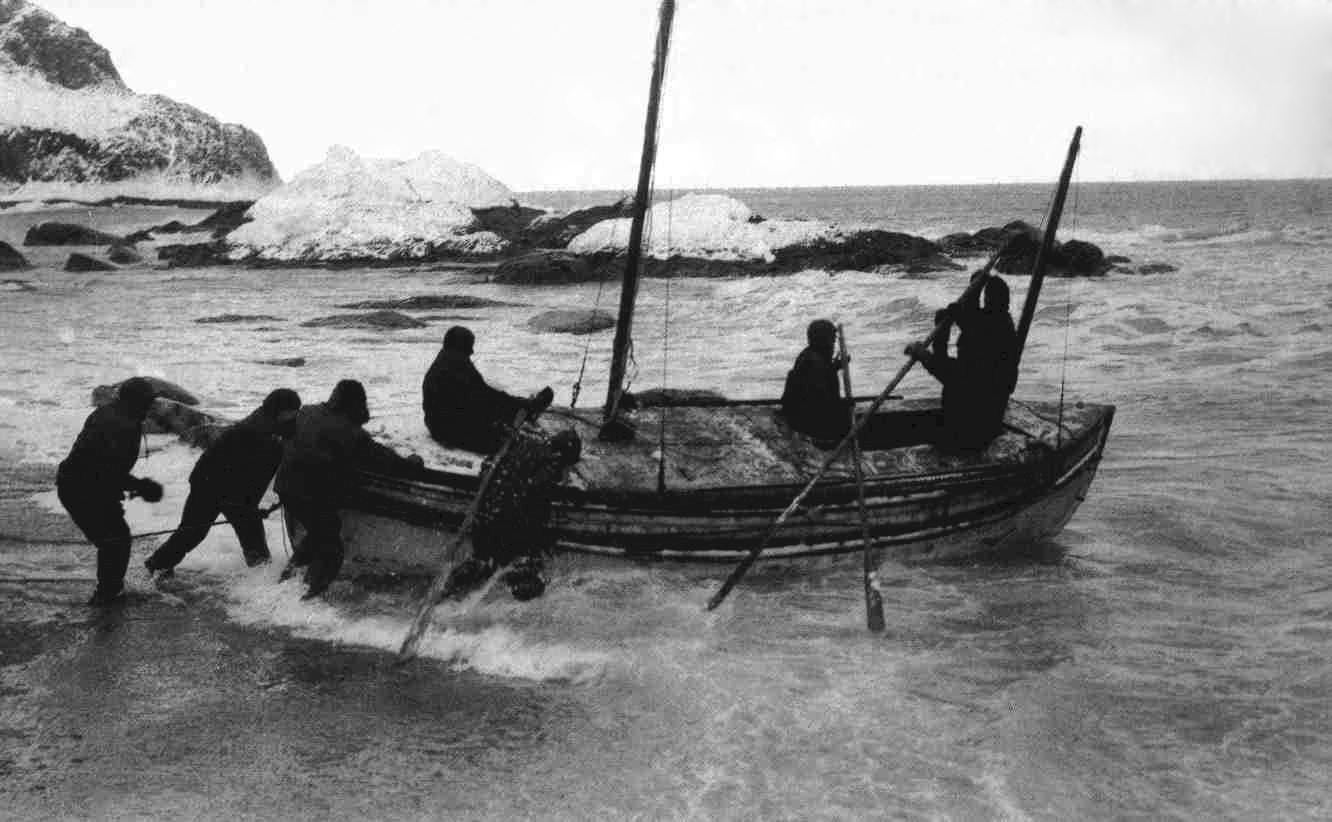Earnest Shackleton’s ill-fated 1915 attempt to traverse Antarctica came unstuck when his vessel, The Endurance, was trapped and crushed in pack ice. Cast adrift on a floating sheet of ice, Shackleton and his twenty seven men were left with only their wits and three small boats to survive the rigours of the frozen sea. After a grueling six months spent living on seal meat, the ice thinned enough for the men to take to their boats and make their way into the Southern Ocean. A perilous journey awaited in some of the world’s most inhospitable waters, with a thousand miles separating the men from any sign of civilisation. It is at this juncture that the Endurance’s captain, Frank A. Worsley, takes up the narrative of Shackleton’s remarkable duel with death in Shackleton’s Boat Journey. First published as a single edition in 1931, the book was published by the Folio Society in 1974 and re-issued in a new edition in 2015. It is this latest edition I’ll be looking at here. At the time of writing, the book is in print and available at £47.95, making it among the less expensive books in their current catalogue.






Things get off to a fairly ordinary start as we receive a standard Folio Society slipcase, albeit one covered in a tasteful blue paper. Within is a volume whose boards are covered with a paper that is convincingly textured like cloth. It is printed with a wraparound design by Simon Pemberton (who also supplies vignette illustrations to open each part). Pemberton’s binding design depicts the small boat aboard which Shackleton made the eponymous journey, dwarfed by inky swirling waves. It’s an artistic, evocative, and, I think, quite beautiful design. The binding has a couple of further embellishments to mention. First, the title is blocked and lightly debossed in silver on the front board, as well as on the spine. The silver is a nice complement for the overall aquatic colour scheme. Second, the pattern of the raging waves is embellished with spot UV (a transparent gloss varnish applied to the surface). This has two wonderful effects: it makes the wave shimmer in the light like water, and it introduces a smooth area to the book’s surface that almost feels wet next to the rougher texture of the bare paper. Overall, I’d say this book has an inspired exterior design.
After plain teal endpapers we find a book printed on 168 pages of Abbey Wove paper. The title page is presented as a two-page design with a photograph of Shackleton’s men in one of their boats spanning the full two-page spread. The title is tastefully overlaid on the recto page. It was a bit of a shame not to see Pemberton’s contribution to the book credited on the title page. The text is set in Bodoni, with Sackers Gothic display.




The book is illustrated with contemporary photographs from the expedition, mostly taken by expedition photographer Frank Hurley. Like Ill Met by Moonlight, whose journey was inhospitable for quite different reasons, I find it incredible that photographs should exist at all. It takes a particular dedication to craft for a photographer to continue taking and preserving images when merely surviving demands the full exertion of a his capacity. Hurley’s gift to posterity is that this remarkable story is brought to life through his black and white frames. The thirteen full-page photographic plates are printed on a gloss paper. Rather than being grouped in a single cluster at the centre of the book, the images are distributed fairly evenly throughout, which I much prefer.



Worsley’s prose is engaging and exciting. He gives his reader a real sense of the adversity faced by the men during their months among sea and ice without ever coming off as anything other than stoic. Never tedious, the account successfully keeps us on the edge of our seat, wondering “will they make it?” even though the answer is already widely known. Non-fiction is seldom such a page-turner and we race towards the book’s climax, which is no less fulfilling or moving than the best hand-crafted narrative. An accompanying introduction was penned by famed contemporary explorer Ranulph Fiennes, a fitting choice who dispensed the role most effectively. Lastly, the presentation is completed with the inclusion of two nice clear maps showing the phases of Shackleton’s journey.
In summary, this is an example of Folio Society at its best, combining tasteful design with classic texts at a modest price. Highly recommended. ■
Where to buy
At the time of writing, the edition is available direct from the Folio Society.
You can also search for and buy one of the Folio Society editions on: eBay US*, eBay UK*, AbeBooks US*, or AbeBooks UK*.
Or browse more generally for Folio Society books at:
eBay US*, eBay UK*, AbeBooks US*, or AbeBooks UK*.
* These are affiliate links. Buying a book via one of these links produces a modest revenue for this site at no additional cost to you. Any revenue thus generated is recycled into supporting the activities of this site.
Miscellaneous
The Folio Society also recently published Shacleton’s Antarctica, which includes Shackleton’s own accounts of the Endurance expedition.



One thought on “Shackleton’s Boat Journey by F. A. Worsley (Folio Society, 2015)”